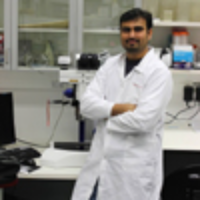Correlation between mandibular condylar position and clinical dysfunction index after bilateral sagittal split osteotomies
Published on: 4th June, 2019
OCLC Number/Unique Identifier: 8165128692
Several articles have discussed mandibular condyle position after bilateral sagittal split osteotomies (BSSO). However, previous studies have sought to establish a relationship between orthognathic surgery and the improvement of temporomandibular joint (TMJ) signs and symptoms. Also, they have been limited to two-dimensional evaluation of condylar position considering only the condylar “sag” or improper inferior seating of the condyle. The purpose of this study was to investigate a relationship between changes in condylar position using three-dimensional computed tomography and the negative clinical impact of BSSO on the temporomandibular joint.
Management of temporomandibudar joint ankylosis with costo-chondral graft application: Case report and review of literature
Published on: 27th February, 2020
OCLC Number/Unique Identifier: 8560390804
Introduction: Temporomandibular joint (TMJ) ankylosis is one of the most disruptive anomaly that affects the masticatory system and is referred as permanent movement disfunction of the mandible caused by bilateral or unilateral fibrous or bony adhesions and create problems. The etiology is congenital or idiopathic and include trauma, arthritis, infection, previous TMJ surgery etc. Management requires extensive resection of the ankylotic mass and reconstruction of the ramus-condyle unit with autogenous or alloplastic grafts. Most of the time, combination of surgical treatment with physiotherapy is needed in order to achieve maximum rehabilitation and functionality of the mandible.
Purpose: The aim of this study is to present the surgical management of an unusual case of unilateral TMJ ankylosis and recent of literature review.
Case report: A thirty-seven-year old patient reported unable moving his lower jaw. Clinical examination revealed unilateral TMJ ankylosis of congenital cause and the lateral movement of the mandible was impossible. The patient surgical treatment included resection of the newly formed bone mass, replacement of the condyle with costo-chondral graft and replaced of articular disc with the temporal fascia. Since and for ten years after surgery the patient shows no signs of relapse.
Conclusion: The development of TMJ ankylosis may be congenital or acquired etiology. In order to manage it required a comprehensive clinical and radiographic examination. Surgical resection of the bone and coronoid process on the entire side is necessary and a graft that mimics the articular disc is placed, while it is necessary the immediate postoperative kinesiotherapy.
Kummoona Chondro-Ossous Graft for Reconstruction of the Temporomandibular Joint in Children
Published on: 23rd September, 2017
OCLC Number/Unique Identifier: 7869216865
There are a lot of controversy about the usage of graft for reconstruction of the TMJ, many researchers tried in the past different technique to be applied in the TMJ [1], for restoration of growth and all failed and some of these techniques may be used for one trial without success.
Evaluation of the health of temporomandibular joint – A novel technique
Published on: 23rd July, 2022
Case report: This case report aimed to evaluate temporomandibular joint activity in a patient with the temporomandibular disorder before and after disclusion time reduction (DTR) therapy.Results: Positive changes in joint health were observed in the patient after the DTR treatment. Conclusion: The joint vibration analysis objectively showed significant results with the disclusion-time reduction therapy. The measured parameters were closer to the reference values. Thus, DTR is an effective method to treat TMJ disorders, based on Piper’s classification.




